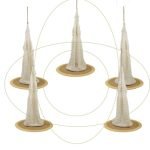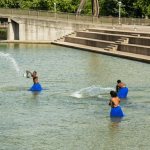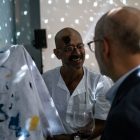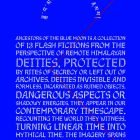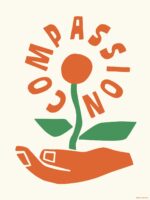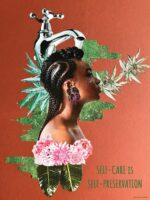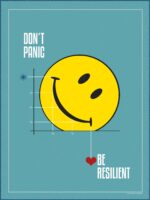FOR IMMEDIATE RELEASE FOR IMMEDIATE RELEASE
INAUGURAL WELLBEING SUMMIT FOR SOCIAL CHANGE HIGHLIGHTS THE INTEGRAL ROLE OF ART IN DEVELOPING A NEW LANGUAGE FOR WELLBEING AND SOCIAL CHANGE
-
-
- Involving more than 85 artists across 10 venues, the Summit will bring exhibits, newly commissioned works and a vibrant performing arts program to Bilbao
-
- Participating artists include: Yazmany Arboleda, Miroslaw Balka, Dineo Seshee Bopape, Janet Cardiff, Nikhil Chopra, Himali Singh Soin, Daan Roosegaarde
-
- Cultural partners include: Guggenheim Bilbao, Rubin Museum of Art, Science Gallery Bengaluru, Ursula Hauser Collection, and others
-
BILBAO – BISCAY, SPAIN (May 11, 2022) – The Wellbeing Project presents its inaugural Wellbeing Summit for Social Change from 1st to 3rd June 2022: a global event bringing together social change, governmental, arts and business leaders working at the intersection of individual and collective wellbeing.


The three-day summit will consist of ground-breaking talks, conversations and panel discussions highlighting the connections between individual, organisational and societal wellbeing. Speakers will discuss the notion of how a deeply embedded culture of wellbeing can alter and inform our approach to driving positive systemic change.
The Wellbeing Summit chose the location of Bilbao, Biscay because it is an international hub for art and culture. It is a place in the process of deepening its transformation by focusing on a Charter of Values that centres on improving the wellbeing of its citizens and the Sustainable Development Goals.
The arts play an integral role in the development of a new language for inner wellbeing and can provide a greater understanding and expression of the human experience. During the summit, visitors will encounter different artistic experiences through a selection of exhibits, artworks and a vibrant performing arts program. Involving more than 85 artists at 10 venues, the event offers participants and residents of Bilbao the opportunity to take an interactive journey exploring what social change becomes with inner wellbeing at its heart.
“The arts have a unique power to express ideas and emotions in new ways, to create experiences that have a profound impact on our lives, and to help us make sense of the world around us. The Arts Program at the Summit invites us all to embark on a creative journey together; a journey that I hope will activate our whole selves and continue to resonate in our hearts and minds long after the event ends.” – Manuel Bagorro, Arts Curator, The Wellbeing Summit for Social Change
Inspiring and creative Immersive Talks and Workshops will pair artists and speakers to examine wide-ranging topics that include neuroscience; intergenerational trauma; spirituality and rituals; diversity, equity, and inclusion; economics; business; climate; and technology.
The summit’s Artist Track program has commissioned 12 international artists to create a major new work exploring the idea of inner wellbeing, either for themselves, the community, or the world. Through the Artist Track, the Wellbeing Summit offers creative residencies in Bilbao-Biscay to support the creation of risk-taking new work that challenges assumptions and builds community. Vicente Todoli, Artistic Director of Pirelli HangarBicocca, has acted as advisor on the selection of artists.
Highlights include, Indian artist, Nikhil Chopra who will stage a 24-hour durational solo performance, placing his body at the centre of the artwork; while as part of her installation Himali Singh Soin collaborates with drummer, composer, and performance artist David Soin Tappeser to offer daily rituals that include a gong bath, readings and communal tea.
Artist and architect, Yazmany Arboleda creates a site-specific installation, Hospital for the Soul in the centre of Casilda Iturrizar Park. For 11 days, visitors will be able to see the reflection of Magnolia Tree #5, the Biscay Sky, themselves, and anyone else present in a specially created room. The temporary mirrored interior, created in response to the generational trauma caused by the Spanish Civil War, invites participants to reflect on our place on earth.
Bilbao-based artist, June Crespo has produced 3 new works related to her concrete sculpture series Core. Sculpted with materials such as fabric, concrete, fiberglass, plaster, and wax, her works are designed to be used by the public as a playground, a place to rest and contemplate, or a place to ‘dance’ with the pieces that act as a reminder of the interplay in our lives between what is absolute and grounded with the ephemeral and elusive.
Across the three-day summit, performances and community workshops will be offered by groups including the Harlem-based Bishop Chantel Wright and Songs of Solomon Gospel Choir and Silkroad Ensemble.
Artist Daan Roosegarde will debut SPARK Bilbao, a poetic performance of thousands of biodegradable light sparks which will organically float through the air, offering an innovative solution for sustainable community celebrations.
Other highlights include the Rubin Museum of Art’s Mandala Lab an interactive space that uses artists’ creativity and Buddhist principles to help visitors imagine how to transform disruptive emotions such as anger, jealousy, and pride. Located in Parque de Doña Casilda de Iturrizar, the Mandala Lab features a pulsating light sculpture to encourage synchronized breathing, scent stimuli and videos to help unpack memories, and eight musician-curated gongs that the visitor can strike and dip into water.
Notes to Editors
For further information, please contact:
Nina Sandhaus
Evangeline MacSwiney
Scott & Co
nina@scott-andco.com, evangeline@scott-andco.com
The Wellbeing Project
The Wellbeing Project is a global initiative focused on catalysing a culture of inner wellbeing for all changemakers and structured in four pillars – model programs; research and evaluation; learning, convening, and enabling; and storytelling and connecting. The organisation is inspired by love, care, and compassion for all the people who work to build a better world, as well as to support the many causes and movements for which we all work. The Wellbeing Project is co-created with Ashoka, Georgetown University, Impact Hub, Porticus, the Skoll Foundation, and the Synergos Institute. wellbeing-project.org.
Partners include: – BBVA; Bizkaia – Government of Biscay; City of Bilbao; Latham & Watkins; Azkuna Zentroa; Canadian Embassy of Madrid; Community Arts Network; Draiflessen Collection; Guggenheim Bilbao; MIT Media Labs; Museo De Bellas Artes de Bilbao; Thyssen Bornemisza Art Contemporary; The Robert H. N. Ho Family Foundation Global; The Rubin Museum of Art; Science Gallery; and Ursula Hauser.
Speakers include: – Rajni Bakshi, Briggs Bomba, Kate Byrne, Laura Calderon de la Barca, Aneel Chima, Gary Cohen, Dr. Richard J. Davidson, Suparna Diwakar, Peggy Dulany, Mallika Dutt, David Germano, Sennay Ghebreab, PhD, Jay Coen Gilbert, Dr. Eddie S. Glaude Jr., Ramsés Gómez, Edgard Gouveia Jr, Vanessa Haigh, Zarlasht Halaimzai, Reggie Hubbard, Nadine Kaslow, PhD, ABPP, Dr. Barry Kerzin, Dr. Julia Kim, Dr. Sará King, Satish Kumar, Juan Mari Aburto, Wanja Muguongo, Deepa Narayan, Wellington Nogueira, Clara Oyuela, Cristiane Ferraz Prade, Aaron Pereira, Father Timothy Radcliffe, Imam Sayed Ali Abbas Razawi, Rabbi David Rosen, Sharon Rosen, Zainab Salbi, Carolin Schmee, Jessamyn Shams-Lau, Laureline Simon, Najat Vallaud-Belkacem, Justin Michael Williams, Sandrine Woitrin
Artists and Arts Projects include: – Grimanesa Amoros, Yazmany Arboleda, Loreto Aramendi, Miroslaw Balka, BBVA Art Collection, Birdheart, Dineo Seshee Bopape, Berlinde De Bruyckere, Kenyatta Emmanuel, Brooklyn Rider, Janet Cardiff, Nikhil Chopra, June Crespo, Alicia Framis, Carlos Garaicoa, Aaron Huey, Eva Lee, Madalitso Band, Hope Masike, Emeline Michel, Mohau Modisakeng, Aakash Odedra, David Strathairn, Joshua Roman, Daan Roosegaarde, The Rubin Museum – Mandala Lab, Sonja Schenkel, Falu Shah and Karyshma, Himali Singh Soin, Daniel Steegmann Mangrane, Science Gallery Bengaluru, Shirley Tse, Silkroad, Ursula Hauser Collection, Jazmine Williams, Gerald Wirth, Bishop Chantel Wright and Songs of Solomon, Vocalia Taldea, Thomas Cabaniss, Josu Elberdin, Zirkozaurre.
The participants of this event will attend largely by invitation to ensure a diverse, representative, and pluralistic community of attendees. This will be the first of two global summits The Wellbeing Project will convene with the second to be announced for 2024.
Following the in-person summit, there will be virtual elements available to the public hosted by Parker J. Palmer, Author, Educator and Activist; Founder and Senior Partner Emeritus of the Center for Courage and Renewal (USA) and Sharon Salzberg, NY Times Bestselling Author and Meditation Teacher (USA).



